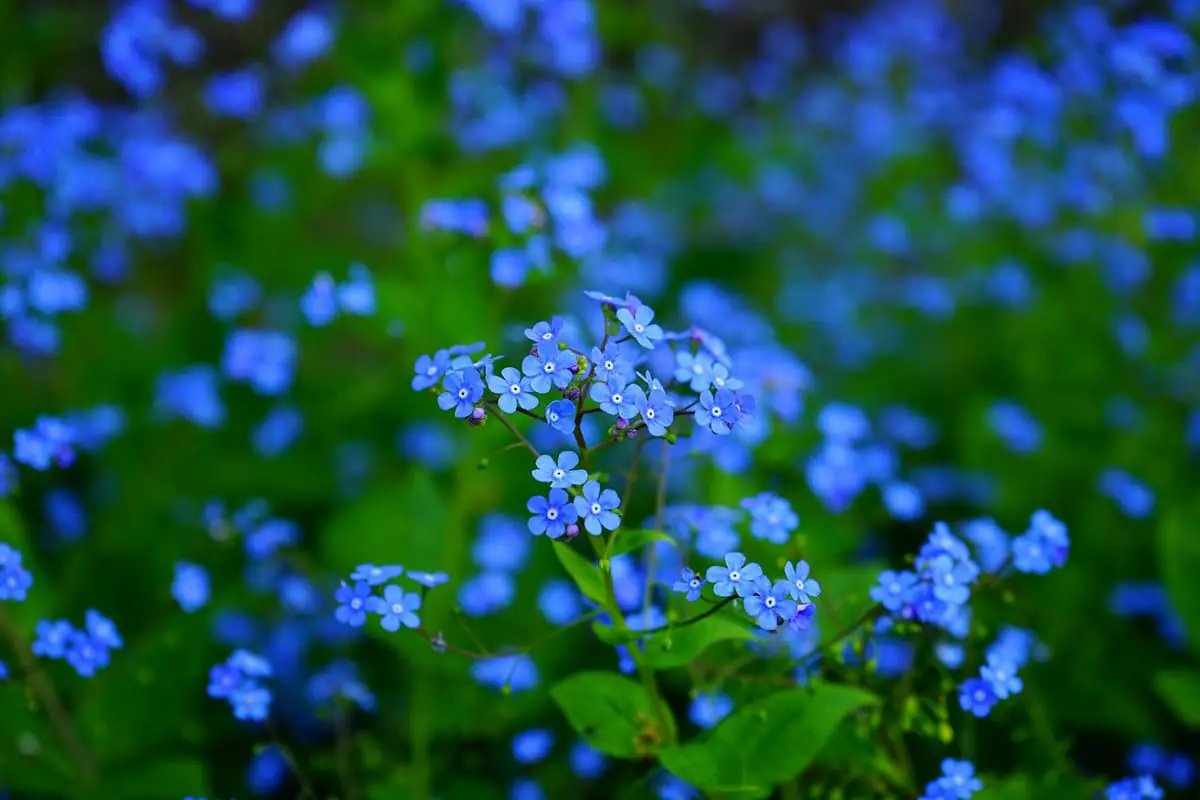
We will all agree that flowers have a special beauty. For this reason they are very popular for decorating homes, gardens, streets and parks. Some we may like more than others, but their importance goes far beyond aesthetics. We will clarify this fact by talking in this article about the importance of flowers in nature.
So that we can fully understand it, we will also explain what exactly are flowers, what different types exist and what are their functions and importance in nature.
What are flowers in nature?

Before talking about the importance of flowers in nature, we must first understand what they are. It is basically a structure whose main objective is the reproduction of its species. They generally have a very pretty, colorful and striking appearance, which makes flowering vegetables highly decorative elements. Nature has done it this way on purpose, because the great attraction of flowers not only attracts us, but also many insects and birds that help spread pollen and flower seeds, thus favoring the reproduction of plants. .
It should be noted that the flowers have different parts, depending on the sex to which they belong (male, female or hermaphrodite). These are the most important:
- Sepals: They are leaves whose function is to cover and protect the flower when it is still very young. When it blooms, the sepals stay below.
- Petals: They can have different shapes and colors. Its function is to attract pollinators, such as bees. However, there are some flowers that do not have petals. These are called apétalas.
- Gynoecium or pistil: It is the female part belonging to the flower. It houses the ovules that generate the seeds after being fertilized. The pistil is shaped like a bottle and is made up of three parts. The upper one is the stigma, where the pollen enters. The bottleneck would be the style and then comes the ovary, which is where the ovules are found.
- Stamens: The stamens are the male part of the flower. They are filaments that support the so-called anther, which is the organ responsible for producing and storing pollen grains. These pimples are the male sexual gametes.
What types of flowers are there in nature?
When it comes to differentiating the different types of flowers in nature, it is important to note that plants can be divided into two large groups: Angiosperms and Gymnosperms. The latter are mainly characterized by not producing flowers. They are generally more primitive than the former and reproduce mostly by spores. A good example for this type of vegetable would be Ferns.

Related article:
Instead, the plants that are part of the angiosperms they do produce flowers. In fact, there is a great variety of them: Between 250 and 400 different flowers. This large plant group can be further divided into two subgroups:
- Monocotyledonous plants: As its name indicates, they only have a single cotyledon, which is the first leaf that is born after the germination of the seed. In this type of vegetables, the leaves have veins that run parallel to them, without starting from the same central vein. The roots of monocotyledonous plants have a similar structure, since they do not start from a main root and develop in numerous individual fibers. These would be some examples: Lilies, daffodils, tulips and orchids.
- Dicot plants: On the other hand, dicot plants have two cotyledons. The leaves of these do have a central vein from which the others start in a branched manner and cover the entire leaf. The structure of the roots is very similar, since the small ones start from a main one, branching out until they cover a lot of ground. Among the dicotyledonous plants are daisies, roses and begonias, among others.
There is also another way to classify different types of flowers: Complete flowers and incomplete flowers. The first are hermaphrodites and have all the main elements, such as roses. On the other hand, incomplete flowers are of a single sex, since they do not have all the elements, but only stamens or pistils. Some examples would be sunflowers and daisies.
How important are flowers in nature?

As we have already mentioned before, flowers are the reproductive structures of plants. Therefore, its importance in terms of the multiplication of this type of plants is evident. Nevertheless, its usefulness goes much further, although it should not be underestimated. Thanks to the reproductive help they provide, many plant species are able to multiply and not become extinct. Consequently, they can continue to provide certain services that both we and animals and other living beings can take advantage of, such as food.
And so we also come to the next point in which the importance of flowers in nature stands out: Food. These plant structures serve as food for numerous species and in different ways. On the one hand, some animals consume them whole, such as rabbits. But there are also some living beings that feed on nectar, such as hummingbirds, butterflies, bees and even some types of bats, among others. In addition, we also consume flowers. It is becoming more and more fashionable to cook with its petals and make infusions.
Another extremely important feature that we should mention is the use of flowers medicinally. As you probably already know, some medicines are made with these plant structures. However, they are not only useful for us to treat health problems, but also for animals. Many of them are able to distinguish different types of flowers according to the effects they can have on their organisms. Therefore, they consume one or the other according to the needs they have at that moment.
Undoubtedly, flowers are extremely decorative elements that make anyone’s eyes happy. However, its uses, functions and properties are essential in many aspects of life as we know it today.
